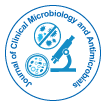

Opinion - (2024)Volume 8, Issue 2
In the field of infectious diseases, Klebsiella variicola has emerged as a notable bacterium deserving attention due to its epidemiological trends, virulence factors, and evolving resistance mechanisms. Understanding its dynamics is important for combating infections and safeguarding public health against this versatile pathogen.
Uncovering the epidemiology of Klebsiella variicola
Klebsiella variicola, a member of the Enterobacteriaceae family, shares genetic similarities with Klebsiella pneumoniae but possesses distinct characteristics that influence its epidemiological profile. Originally thought to be a less common environmental strain, recent genomic studies have highlighted its prevalence in clinical settings, complicating epidemiological surveillance and infection control measures.
The bacterium's ability to colonize diverse niches within healthcare environments-from urinary tract infections to pneumonia and bloodstream infections underscores its adaptability and potential for causing severe illness. Tracking its epidemiology involves genomic sequencing and phylogenetic analysis to distinguish between different Klebsiella species accurately. This differentiation is central for understanding transmission routes, identifying outbreaks, and implementing targeted infection control strategies.
Virulence factors and clinical impact
Klebsiella variicola possesses an arsenal of virulence factors that contribute to its pathogenicity and clinical impact. These include capsule polysaccharides that enhance resistance to host immune defenses and facilitate adherence to epithelial cells, biofilm formation on medical devices, and production of enzymes like beta-lactamases that confer resistance to antibiotics.
The presence of these virulence determinants varies among strains and influences the severity of infections. In vulnerable patient populations, such as those with adjusted immune systems or underlying health conditions, infections caused by multidrug-resistant Klebsiella variicola strains pose significant therapeutic challenges. The ability of these bacteria to acquire resistance genes through horizontal gene transfer further complicates treatment options, necessitating the development of novel antimicrobial strategies.
Evolution of antimicrobial resistance
Antimicrobial Resistance (AMR) remains a pressing concern in the management of Klebsiella variicola infections. The bacterium exhibits resistance to multiple antibiotic classes, including betalactams (e.g., cephalosporins and carbapenems), fluoroquinolones, and aminoglycosides. This resistance profile is often mediated by plasmids carrying resistance genes such as Extended-Spectrum Beta-Lactamases (ESBLs) and carbapenemases, rendering frontline antibiotics ineffective and limiting treatment options.
The global dissemination of AMR Klebsiella variicola strains highlights the urgent need for concerted efforts in antimicrobial stewardship, infection prevention, and surveillance. Innovations in diagnostic techniques, including rapid molecular assays for detecting resistance genes, are essential for guiding timely and effective treatment decisions. Additionally, the development of new antibiotics and alternative therapies, such as bacteriophage therapy and monoclonal antibodies targeting virulence factors, represents promising path in combating resistant infections.
Strategies for mitigation and control
Addressing the challenges posed by Klebsiella variicola requires a multifaceted approach surrounding surveillance, infection prevention, and therapeutic interventions. Enhanced surveillance efforts, including genomic surveillance to monitor resistance trends and identify high-risk clones, are necessary for early detection and containment of outbreaks.
Infection prevention measures, such as strict adherence to hand hygiene protocols, environmental cleaning, and prudent use of antibiotics, are important in reducing transmission and minimizing the spread of resistant strains in healthcare settings. Educating healthcare personnel and empowering patients about
AMR and infection prevention strategies can encourage a collaborative approach to combatting Klebsiella variicola infections.
Klebsiella variicola represents a formidable challenge in infectious disease management, characterized by its epidemiological adaptability, virulence factors, and evolving resistance mechanisms. Efforts to understand and mitigate its impact on public health must be prioritized through enhanced surveillance, innovative research, and collaborative global initiatives. By addressing the complex exchange of epidemiology, virulence, and resistance, we can strive towards effective strategies to control Klebsiella variicola infections and safeguard the health of populations worldwide. Vigilance and innovation will be key in overcoming this microbial threat and ensuring a healthier future for all.
Citation: Draven E (2024) Klebsiella variicola: Analyzing Epidemiology, Virulence, and Resistance for Health. J Clin Microbiol Antimicrob. 8:193.
Received: 22-May-2024, Manuscript No. JCMA-24-31989 ; Editor assigned: 24-May-2024, Pre QC No. JCMA-24-31989 (PQ); Reviewed: 07-Jun-2024, QC No. JCMA-24-31989 ; Revised: 17-Jun-2024, Manuscript No. JCMA-24-31989 (R); Published: 24-Jun-2024 , DOI: 10.35248/jcma.24.8.193
Copyright: © 2024 Draven E. This is an open-access article distributed under the terms of the Creative Commons Attribution License, which permits unrestricted use, distribution, and reproduction in any medium, provided the original author and source are credited